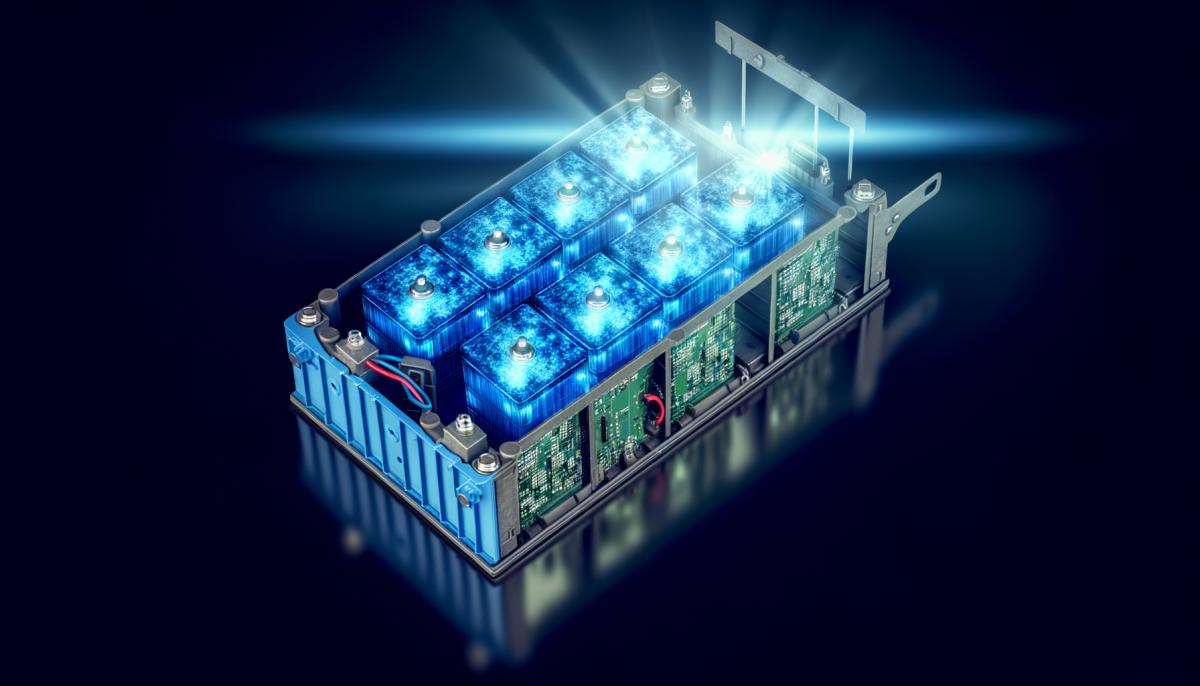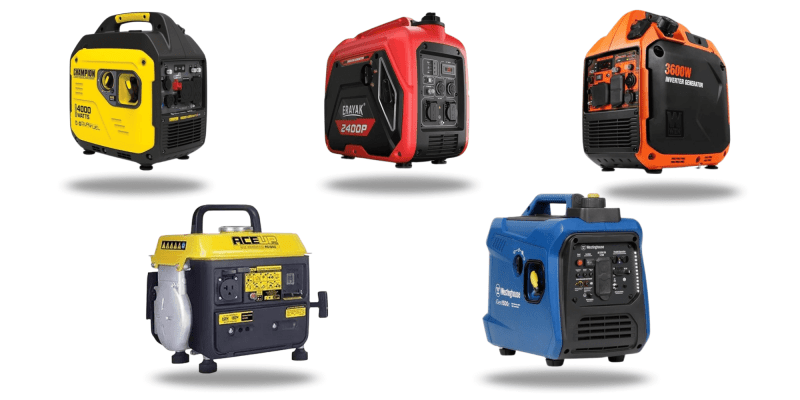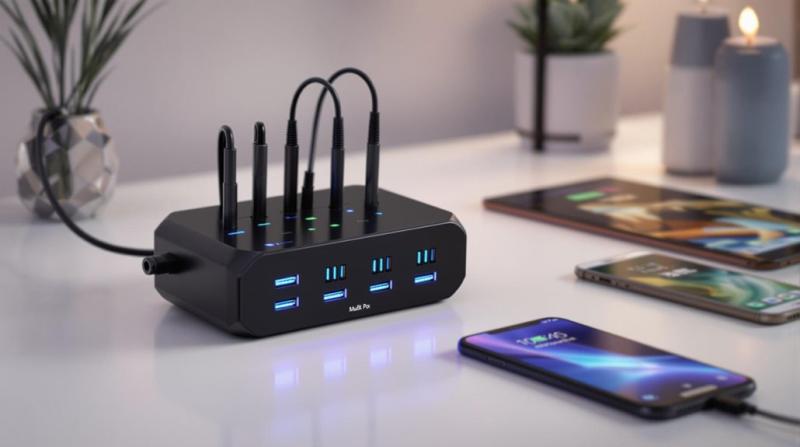Alright, let's dive into the world of power station batteries, shall we?
First up, you'll want to check out their capacity, technology types, and efficiency ratings. Battery capacity, which is measured in kilowatt-hours, basically tells us how much energy the battery can store and deliver. And trust me, this has a huge impact on overall performance.
Now, when you're looking at the different technologies, you'll see that lithium-ion, lead-acid, and flow batteries each offer a unique balance of energy density and lifespan. It's pretty fascinating!
Understanding capacity ratings is super important, too. Why? Because they show the difference between usable and total energy.
But wait, there's more! Multiple factors like temperature and discharge rates can really affect battery longevity and efficiency. So, it's worth diving deeper into these elements to get the full picture of power station battery secrets and how they operate.
Happy exploring!
Understanding Battery Capacity
To really get a handle on the power of station batteries, you've got to dig into how battery capacity plays a huge role in energy output and efficiency.
Battery capacity, usually talked about in kilowatt-hours (kWh), is basically the total amount of energy a battery can store and then release over time. The big takeaway here is that a higher capacity means longer energy delivery, which is super important for keeping things stable in power stations.
Think about it—if your energy needs go up and down, having a battery with enough capacity ensures you get a steady supply, cutting down on interruptions. But if you guess wrong and underestimate the capacity you need, you could run into shortages during peak times. That can lead to inefficiencies and even system failures. Not good!
Another thing to keep in mind is how capacity affects the efficiency of power station batteries. The state of charge (SOC) of a battery can really change how efficient it is. When you push a battery to its limits, its efficiency can drop. So, keeping the SOC at an ideal level not only makes the battery last longer but also boosts overall system performance. Strategies like peak shaving or load leveling? Yeah, those depend a lot on understanding capacity to make things more sustainable and cut down on waste.
And hey, battery capacity isn't a constant thing. It's influenced by stuff like temperature, aging, and how many cycles it's gone through. By keeping an eye on these factors, you can get better energy output and manage costs effectively.
Getting a grip on these dynamics is key if you want to get the most out of your power station batteries and run things as efficiently as possible.
Types of Battery Technologies
Understanding the different types of battery technologies out there is super important if you want to optimize energy storage solutions in power stations. Each type has its own unique characteristics and advantages, which can make a big difference in terms of operational efficiency and cost-effectiveness.
So, let's talk about lithium-ion batteries first. They're the big players in the market because they have a high energy density and a long cycle life. These batteries are perfect for rapid charging and discharging, which is great for applications that need quick responses, like grid stabilization. But, there's a catch—they can be pretty expensive, and you really need to manage the heat to avoid any safety issues.
Now, let's not forget about lead-acid batteries. Yes, they're older technology, but they still have an important role in energy storage. People love them for their reliability and low initial cost, which makes them popular for backup and off-grid systems. The downside? They have a shorter lifespan and lower energy density compared to the newer options, which can make them less ideal for larger-scale applications.
Flow batteries are another interesting option. Vanadium redox flow batteries, for example, are getting a lot of attention because they can provide scalable energy storage. They can discharge for longer durations and are easily sized to meet specific grid needs. However, they're a bit complex and generally come with higher upfront costs, which can be a turn-off for some folks.
And then there's sodium-sulfur batteries. These batteries have high energy density and long lifespans, making them a good choice for bulk energy storage. They do operate at high temperatures, so you'll need additional management systems for that, but their efficiency can make them worth the hassle in certain situations.
Capacity Ratings Explained
Alright, let's break this down.
Capacity ratings are super important metrics that tell us how much energy a battery can store and deliver, which is a big deal for power station applications. These ratings are usually shown in ampere-hours (Ah) or watt-hours (Wh). Basically, they give you an idea of how well the battery can handle peak loads and deliver energy over time. Knowing these numbers helps you figure out if a battery can meet your energy needs.
Now, when you're checking out capacity ratings, you gotta think about the discharge rate. A battery's rated capacity is typically measured under specific conditions, usually over a 20-hour discharge cycle. But here's the kicker: if you pull energy faster, the apparent capacity can drop. This is called Peukert's law. So, you need to consider how your application uses energy when you're evaluating capacity.
And there's more! Factors like temperature, age, and cycling history can seriously affect actual performance. An older battery or one that's been in extreme temperatures mightn't deliver its rated capacity. Plus, you need to know the difference between usable capacity and total capacity. Not all the stored energy can be safely used. If you discharge a battery too much, it can shorten its lifespan.
Comparing Popular Power Stations
When you're comparing popular power stations, it's super important to check out their specs. Things like energy output, efficiency, and runtime really help you figure out which one fits your needs best.
So, let's start by looking at energy output, which is usually measured in watt-hours (Wh). This number tells you how much energy the power station can dish out before it needs a recharge. Generally, the higher the watt-hour rating, the more juice it has to power multiple devices or even big appliances.
Next up, efficiency ratings. These are crucial for good battery performance. An efficient power station keeps energy loss to a minimum during charging and discharging. Pay close attention to the inverter efficiency, too, because a crappy inverter can really mess with your overall energy use. Some models even feature pass-through charging, letting you power up devices while the station itself is recharging. Pretty neat, right?
Now, let's talk runtime. This depends on the battery capacity and the load you plan to hook up. If the power station has a bigger battery or you're not plugging in a ton of stuff, it'll last longer. But don't just get caught up in how big the battery is. Think about how many devices you'll be connecting and what their wattage requirements are.
Also, you gotta check out the variety of ports and output types—like AC, USB, and DC outlets—to make sure it's compatible with all your gadgets.
Factors Affecting Battery Performance
Numerous factors influence battery performance, including temperature, charging cycles, and discharge rates, all of which can greatly affect how efficiently a power station operates.
Temperature, for instance, plays a significant role. Excessive heat can accelerate chemical reactions within the battery, leading to quicker degradation, while low temperatures can diminish capacity and output. It's important to maintain an ideal operating temperature range to guarantee longevity and efficiency.
Now, let's talk about charging cycles. They also considerably impact performance. Each cycle of charging and discharging contributes to wear and tear, gradually reducing the battery's overall capacity. By minimizing deep discharges and employing smart charging practices, you can extend the lifespan of your batteries. Manufacturers often provide specifications, so sticking to their recommendations can help prevent premature deterioration.
And then there are discharge rates, another important factor. A higher discharge rate can lead to voltage drops, which might not only strain the battery but also compromise its functionality. It's necessary to match your power station's draw with the battery's rated discharge capabilities. When you exceed these limits, you might experience overheating or reduced performance.
Oh, and let's not forget about the quality of the materials used in battery construction. High-quality components generally lead to better efficiency and stability under varying operating conditions. Regular maintenance checks can uncover any emerging issues, allowing you to address them proactively.



